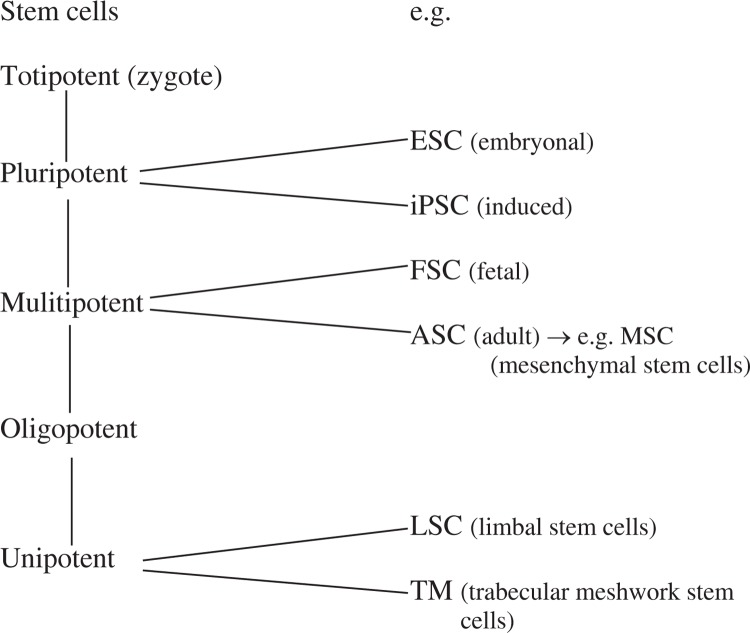Fig. 1.
Different stem cells: based on their differentiation potential stem cells can be described as totipotent, pluripotent, mulitipotent, oligopotent or unipotent [9]. Totipotent stem cells derive from an early progeny of the zygote up to the eight cell stage of the morula and have the ability to form an entire organism and the extraembryonic membranes [10, 11]. Pluripotent cells can differentiate into tissue from all 3 germ layers (endoderm, mesoderm, and ectoderm). Multipotent stem cells may differentiate into tissue derived from a single germ layer such as mesenchymal stem cells which form adipose tissue, bone, and cartilage. Oligopotent stem cells, also called tissue-resident stem cells, can form terminally differentiated cells of a specific tissue [12]. Unipotent stem cells form a single lineage (ex. spermatogonial stem cells) [1]

